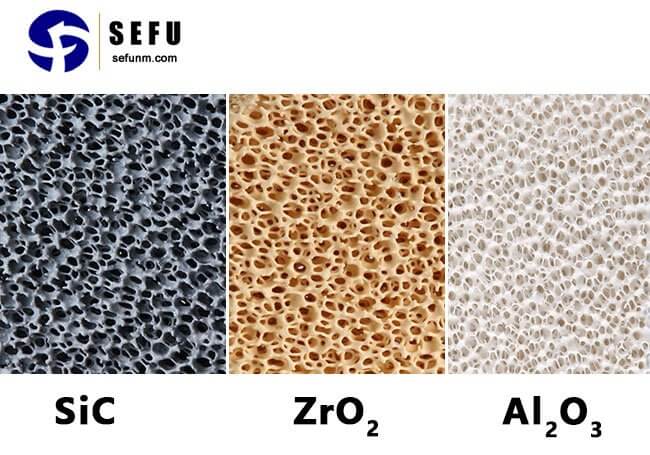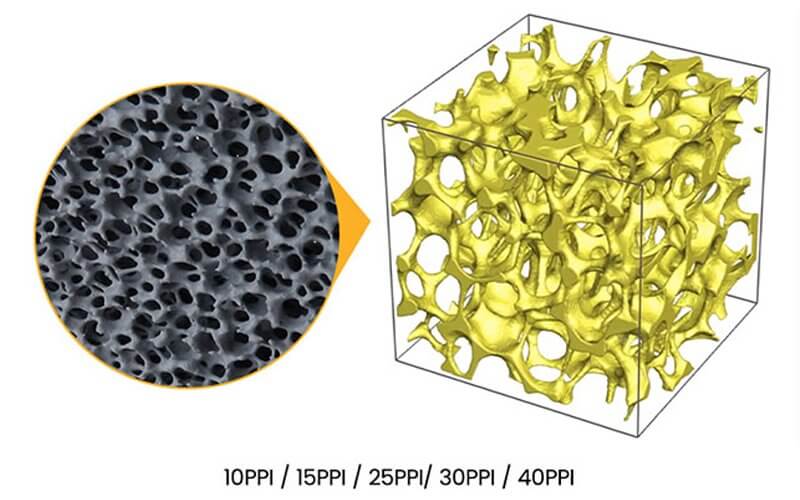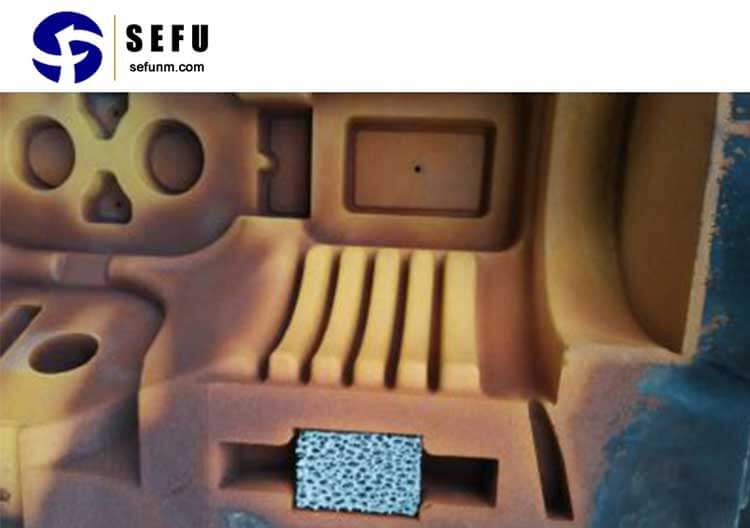Introduction:
In the vast landscape of filtration technologies, porous ceramic filters stand as a remarkable innovation, revolutionizing various industrial processes. Characterized by their intricate three-dimensional structure, these filters offer a dynamic solution for capturing impurities while allowing essential substances to pass through. This article takes a comprehensive journey into the mechanics behind ceramic foam filters, exploring their design, filtration mechanisms, applications, and the profound impact they have on industries worldwide.
The Blueprint of Porous Ceramic Filters:
At the core of porous ceramic filters lies a meticulously engineered structure. Crafted from high-strength ceramic materials like silicon carbide (SiC) or alumina, these filters boast a network of interconnected pores that traverse the material. The pores vary in size, spanning from micro to millimeters, creating a labyrinthine path for substances to navigate.

Dual Filtration Mechanisms at Play:
Porous ceramic filters employ two primary filtration mechanisms, each contributing to their exceptional efficiency:
Mechanical Entrapment:
As substances traverse the porous path, larger particles and impurities are physically entrapped within the pores. The intricate network of channels formed by the interconnected pores facilitates efficient particle capture, akin to a maze designed to apprehend contaminants.
Adsorption:
The ceramic material’s surface is not just a passive substrate; it carries a slight electrostatic charge. This charge prompts the adsorption of charged or polar impurities onto the ceramic surface. These impurities adhere to the material, preventing their passage through the filter.
Engineering the Pore Structure of Porous Ceramic Filters:
The art of ceramic foam filter design lies in engineering the pore structure to suit specific applications. The selection of pore size, distribution, and density is a meticulous process, tailored to the substances being filtered and the desired flow rate. Smaller pores excel at capturing fine particles, while larger ones facilitate the passage of substances without causing undue pressure drop.

Harmonizing Flow and Filtration:
One of the standout features of ceramic foam filters is their ability to strike an optimal balance between substance flow and effective filtration. The interconnected pore structure ensures that the flow remains relatively smooth, minimizing turbulence and pressure drop. This equilibrium allows filtration to occur without significantly hindering the overall flow rate.
Diverse Applications and Impact of Porous Ceramic Filters:
Porous ceramic filters have left an indelible mark across an array of industries:
Metal Casting:
In foundries, these filters are deployed to eliminate impurities from molten metals, elevating casting quality and imparting enhanced mechanical properties to the final products.
Wastewater Treatment:
The filters facilitate the efficient removal of contaminants from industrial wastewater, contributing to water purification efforts and environmental sustainability.
Thermal Insulation:
In applications demanding heat insulation, the porous architecture of ceramic foam filters serves as an effective thermal barrier, preventing heat transfer and ensuring temperature stability.

Fine-Tuning Performance and Parameters:
The optimization of ceramic foam filter performance involves careful consideration of various factors:
Pore Size and Density:
The choice of pore size and density is dictated by the nature of contaminants, the flow rate of the substance being filtered, and the specific application requirements.
Material Selection:
The ceramic material is selected based on its ability to withstand temperature fluctuations, chemical compatibility with the substance, and the overall filtration environment.
Application-Specific Design:
Filters are meticulously designed to accommodate the nuances of the specific substances being filtered and the operating conditions, ensuring optimal filtration outcomes.
Pioneering Innovations and Future Trajectories:
Porous ceramic filters continue to evolve through continuous research and innovation. Researchers are delving into advanced ceramic materials, novel pore configurations, and innovative surface coatings to enhance filtration efficiency and material durability. Additionally, the integration of digital technologies for real-time monitoring and performance optimization is on the horizon.
Synergy of Structure and Functionality:
The architecture of ceramic foam filters is a testament to the harmonious interplay between structure and functionality. The intricate network of pores, resembling a natural sponge, is akin to a scientific masterpiece. This carefully designed structure maximizes surface area while optimizing flow dynamics, creating an environment where filtration flourishes.
Fluid Dynamics in Action:
The passage of substances through porous ceramic filters is a fascinating study in fluid dynamics. As substances enter the porous labyrinth, they encounter a controlled environment that ensures a delicate balance between filtration efficiency and minimal pressure drop. The tortuous path carved by the interconnected pores minimizes turbulence, preserving the integrity of both the substance being filtered and the filter itself.
From Laboratory to Industry:
The journey from the laboratory bench to industrial applications is a testament to the efficacy of porous ceramic filters. These filters have transcended theoretical concepts to become indispensable tools across a myriad of industries. From the automotive sector’s quest for precise engine components to the aerospace industry’s pursuit of impeccable turbine blades, ceramic filters have permeated critical manufacturing processes.
Customization for Precision:
The versatility of ceramic foam filters is not confined to their structural design; it extends to customization. Manufacturers tailor these filters to meet the unique demands of specific applications. Whether it’s adjusting pore size for fine particle removal or engineering the filter’s thickness for varying flow rates, customization ensures that the filters seamlessly integrate into diverse industrial landscapes.
Unveiling Casting Excellence:
In the realm of metal casting, porous ceramic filters are a catalyst for excellence. The filtering prowess of these filters ensures that molten metals are cleansed of impurities before they solidify into intricate castings. The result is not just a reduction in defects but a transformation in casting quality, setting the stage for the creation of high-performance components that meet stringent industry standards.
The Quest for Sustainability:
Ceramic foam filters resonate deeply with the current focus on sustainability. By preventing casting defects and minimizing rework, these filters contribute to material conservation and waste reduction. Moreover, their use in wastewater treatment plays a vital role in purifying industrial effluents, aligning with global efforts to safeguard water resources and protect the environment.
Innovation Beckons:
As industries continue their pursuit of excellence, porous ceramic filters remain a canvas for innovation. Researchers explore novel materials, delve into the frontiers of nanotechnology to engineer finer pores, and experiment with hybrid filter designs that combine the strengths of various materials. These endeavors are poised to amplify the efficiency and capabilities of ceramic foam filters, marking the path toward the next era of filtration technology.
A Glimpse into the Future:
Peering into the future, one envisions a world where porous ceramic filters are not just tools but cornerstones of progress. As technological frontiers are pushed, these filters will become more than passive components; they might evolve to incorporate sensors for real-time monitoring or adaptive structures that respond to changing flow dynamics.
Conclusion:
Porous ceramic filters are nothing short of a scientific marvel, transforming theoretical concepts into practical solutions that redefine industrial processes. From their intricate pore structures to the nuanced interplay of filtration mechanisms, these filters have unfurled a new chapter in material purification. As industries stride forward, ceramic filters stand as beacons of innovation, guiding the way toward a future where the fusion of technology and imagination knows no bounds.


